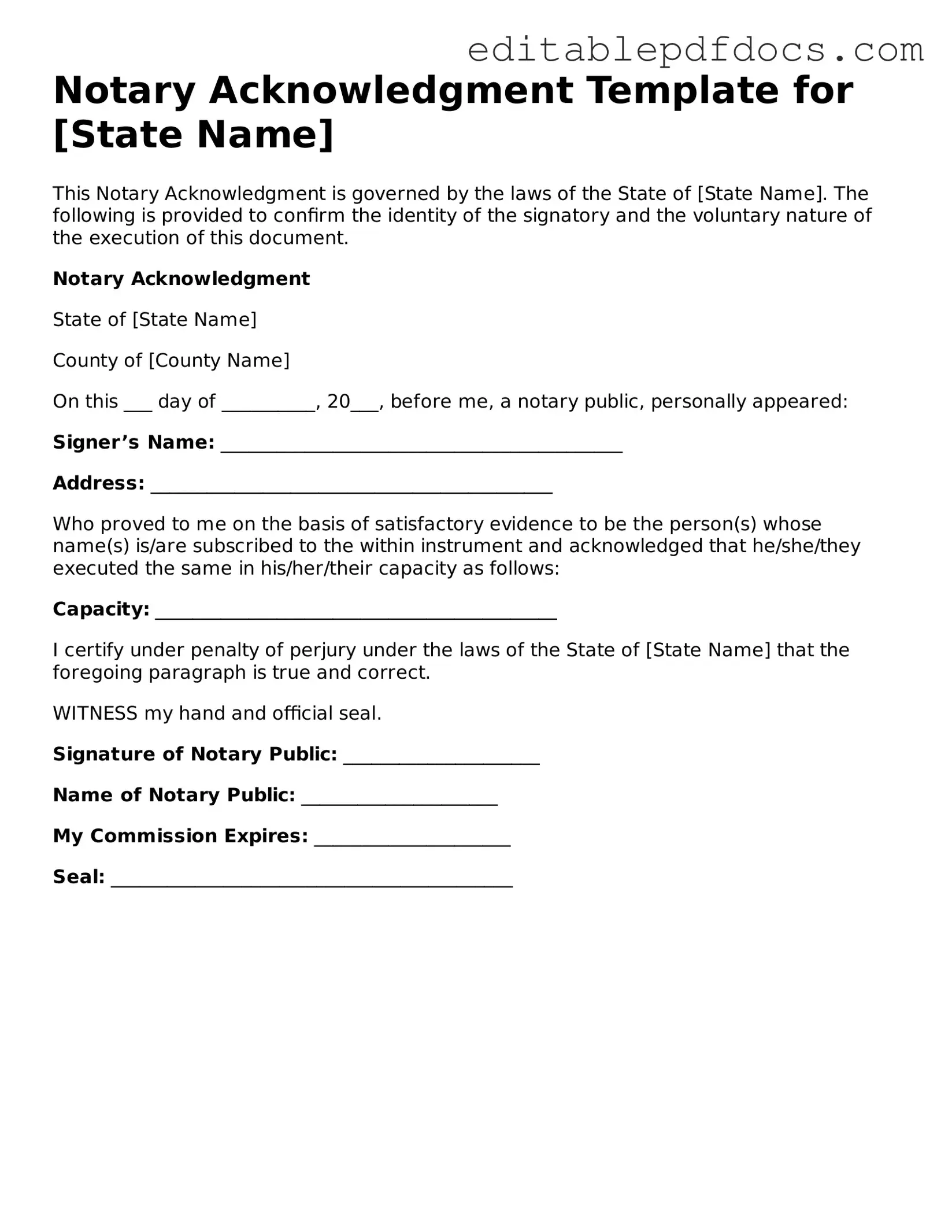Filling out a Notary Acknowledgment form may seem straightforward, but there are several common mistakes that individuals often make. Understanding these pitfalls can save time and ensure that documents are properly notarized. One frequent error is failing to include the date of the acknowledgment. This date is crucial, as it indicates when the notarization took place. Without it, the document may be considered incomplete.
Another common mistake is neglecting to sign the document in front of the notary. The purpose of the notary's role is to verify that the individual signing the document is indeed who they claim to be. If a person signs the document before meeting the notary, the acknowledgment may be rendered invalid. It is essential to sign in the presence of the notary to ensure the process is legally binding.
Additionally, individuals sometimes forget to provide identification. Notaries are required to verify the identity of the signer. If a person arrives without proper identification, such as a driver's license or passport, the notary cannot proceed with the acknowledgment. This oversight can lead to delays and additional trips to the notary.
Another mistake involves using the wrong type of acknowledgment form. Different documents may require specific types of acknowledgments. For instance, a real estate transaction might necessitate a different acknowledgment than a power of attorney. Using the appropriate form is vital to ensure compliance with legal requirements.
People also often overlook the need for the notary's signature and seal. Acknowledgments must include both elements to be considered valid. If either the signature or the seal is missing, the notarization may not hold up in court or during any legal proceedings.
Furthermore, some individuals may incorrectly fill out the notary's section of the acknowledgment form. This section typically requires specific information, such as the notary's name, commission number, and expiration date. Failing to complete this section accurately can lead to complications down the line.
Lastly, individuals sometimes assume that all notaries are the same. However, notaries have different levels of authority and may be limited by state laws. It's crucial to understand the specific requirements and limitations of notaries in your state to avoid any misunderstandings or legal issues.
